There is no need to convince anyone how important proper lighting of the staircase is. However, it is easy to get lost in the market maze, so we have prepared a short guide to proven solutions, offering a handful of theories and a selection of the best products. We invite you to read this book, which will enlighten you and illuminate the darkness!
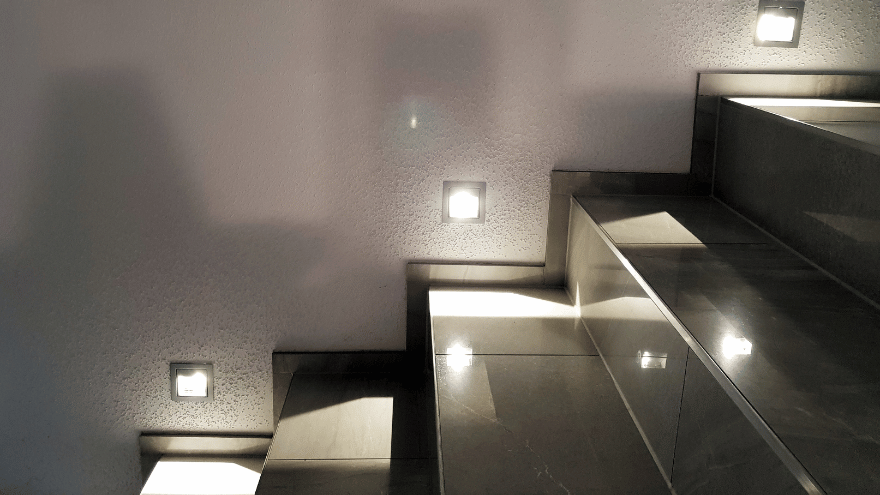
Stair lighting is obvious. Walking even a straight corridor in the dark would be uncomfortable and potentially dangerous, let alone the stairs (apart from the kitchen, this is where most home accidents occur). Everyone has probably walked up the stairs during a power outage (or a burned out light bulb ) and, even though they've been climbing the stairs several times a day every day for years, they forgot the last step or were expecting another one and stepped on the landing wrong, risking a fall or an ankle injury. . As with many other everyday devices, we only properly appreciate the role of staircase lighting when it stops working . Therefore, it is worth choosing a solution that does not disappoint.
Staircase lighting in a single-family house
Replacing conventional light bulbs and fluorescent lamps with durable and energy-saving light-emitting diodes (this is just a more technical name for the popular LEDs) immediately reduced the risk of failure due to the light source burning out. The lifespan of LED lighting is measured in thousands of hours (that's why it works so well in cars), it is not harmed by frequent switching on and off, and the phenomenon typical of energy-saving fluorescent lamps is that it warms up before reaching full brightness (which in the case of staircases turns out to be troublesome). , because the light turns on there for a short time) is completely alien to him. The perfect solution? Until you figure it out 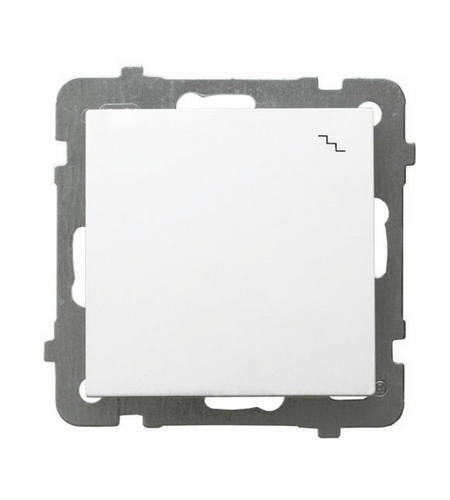 something even better for sure.
something even better for sure.
However, the light source is only one side of the coin. The second is control, and here there are different schools of thought, but a system with two switches - one at the bottom and one at the top of the stairs - still works very well. None of them has permanently defined "on" and "off" positions - switching any of them causes a command to be issued that is opposite to the one that the lighting system previously received from the other one. In other words: you turn on one downstairs, turn off the other one upstairs, then the other person does the same even though the switches are in different positions , and then someone goes from the upstairs bedroom to get a snack to the downstairs kitchen and does the reverse without paying attention. attention to the position of the switches. Alternatively, you can use timer switches - after e.g. a minute, the light will turn off by itself.
How to connect stair lighting
A frequently used solution is to mount small lamps low above the floor instead of full-size ceiling lamps or wall lamps on the walls or ceiling . They illuminate what is most important (they shine light under your feet), use little energy and do not blind you, and this is important when you have to get up at night - eyes that are weaned on light and suddenly dazzled by it see just as little as in complete darkness, so it is better to shine where the eyes are supposed to look, not into them themselves. It seems obvious, but for some reason it is still not the only system used. Who likes whatever. We will not devote much space to the issue of assembly and connection in this case, because the biggest difference compared to any other lighting system is the use of specific, previously described connectors , or a larger number of light sources (above each or every other stage). That's the whole secret.
A higher, nomen omen, level of initiation is lighting mounted directly on the steps of the stairs, using LED strips . Installing such a system may turn out to be more complicated because each light strip is equipped with its own power supply (battery or mains, via 12- or 24-volt power supplies), long strings also require the use of a large number of such strips, but the visual effect (functional) also) is so impressive (and effective) that managers of commercial facilities, such as hotels or sports centers, often decide to use such a solution. There are no obstacles to using them at home.
Stair lighting with motion sensor
As with any lighting that is only turned on for a short time from time to time, control using motion and dusk sensors also works in staircases. In multi-story residential and commercial buildings, this is practically the norm; in single-family houses, such solutions are also gaining supporters. Their advantage is the ability to illuminate individual segments of the staircase instead of the entire staircase (the light turns on only where someone passes by), which saves energy and reduces the risk of disturbing the peace of, e.g., sleeping household members with excessive illumination. 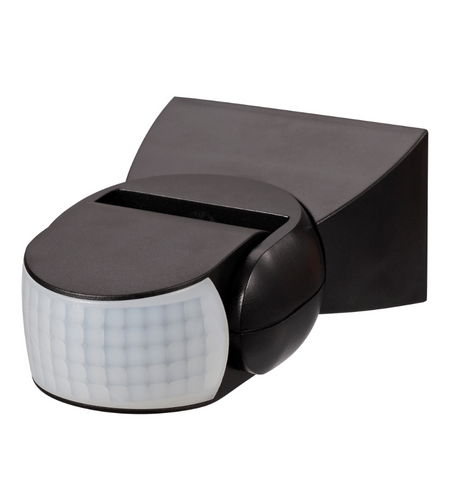
As for the motion and dusk sensors themselves, those interested in delving deeper into this topic are referred to our other article, entirely devoted to the issue of sensors for controlling lighting systems . Of course , if there are no windows in the staircase overlooking the outside of the building , the issue of dusk sensors sort of solves itself - then motion sensors are enough and they have the same amount of work 24 hours a day.
Enough theory, time for practice. Below we present suggestions for specific solutions that can be used when rebuilding or creating a staircase lighting system . However, let this only be an inspiration and a reason for further searches - the offer of the Onninen wholesaler is much wider and we invite you to familiarize yourself with it!
Product overview at the Onninen wholesaler
Laser distance sensor acting as a F&F DRL 12 motion sensor
- detection range smoothly adjustable from 0.1 to 2 m;
- brightness sensor preventing the light from turning on at high brightness levels;
- adjustable light-on time;
- possibility of direct control of 12/24 V lighting circuits (load capacity up to 4 A, which can be increased by connecting LED-AMP amplifiers);
- function of soft switching on and off of controlled lighting circuits;
- ability to trigger AS-225 cascade controllers;
- small size, installation in a ø35 mm box supplied with the sensor;
- LED indicating the operating status of the sensor;
- thermal protection against exceeding the permissible temperature inside the housing;
Laser distance sensor with motion sensor function F&F DRL 12-9
- supply voltage 9÷27 V DC;
- maximum load current 4 A;
- activation threshold - adjustable 2÷500 lx;
- detection field 0.1÷2.0 m adjustable;
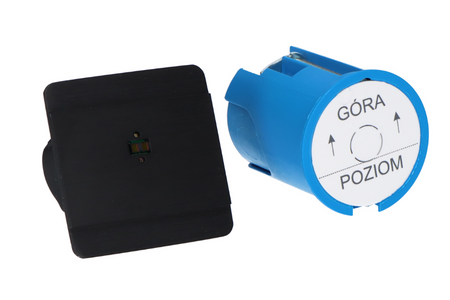
- receiver activation time - adjustable 0÷10 min;
- detection type: ToF laser sensor ( wavelength: 940 nm);
- safety class 1;
- connection: 2.5 mm² screw terminals;
- tightening torque: 0.4 Nm;
- power consumption: 0.3 W;
- operating temperature: -10÷45° C;
- external dimensions: 45×45×1.5 mm; internal (box): ø35 mm, depth 45 mm;
- flush mounting;
- protection level: IP40;
Switching power supply for the F&F ZI-10-12P box
- supply voltage 180÷264 V AC;
- maximum load current: 0.83 A;
- output voltage OUT: 12V DC;
- output power: 10 W;
- efficiency: 82%;
- starting current 40 A (230 V AC);
- output voltage stabilization - when the output voltage changes ±2%;
- output voltage stabilization - when the output current changes ±3%;
- overload 140÷160%
-
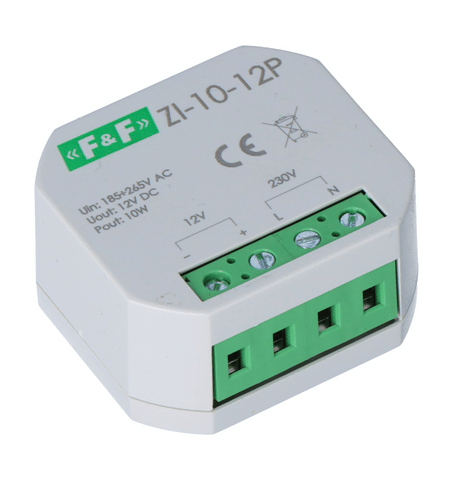 Iout;
Iout; - thermal protection threshold: 135÷150° C;
- leakage current 1 mA (230 V AC);
- connection: 2.5 mm² screw terminals;
- tightening torque: 0.4 Nm;
- operating temperature: -20÷35° C;
- dimensions: Ø54 (48×43 mm), height: 25 mm;
- installation in a Ø60 flush-mounted box;
- protection level: IP20;
F&F AS-225 staircase cascade controller
- control of a multi-point lighting system;
- ability to create a group of any number of controllers;
- each controller allows you to set your own light switching time and the moment at which the next segment will start switching on;
- switching on the light using various switches:
- bell button
- a motion sensor
- optical barrier
- pressure sensor
- the command is given potential-free by connecting the IN/OUT input with the "-" power supply level;
- small casing for an installation box - can be mounted directly under the lamp;
- simple installation - only 3 wires from controller to controller;
F&F AS-225D 12-channel staircase and cascade controller
- F&F AS-225D 12-channel staircase and cascade controller
- supply voltage: 9÷30 v dc;
- number of channels: 12;
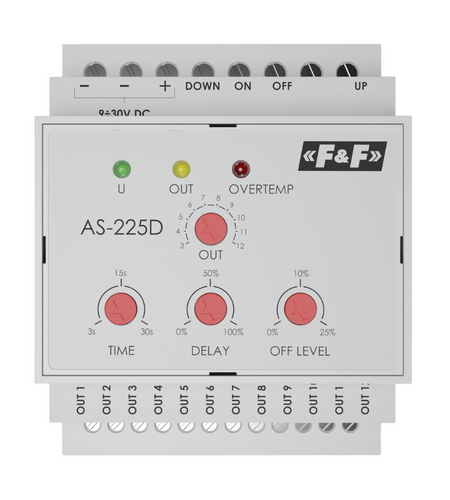
- maximum load current: ac-1 4 a |(1 channel);
- maximum total load (12 channels): 24 A;
- maximum voltage: 30v dc;
- switch-on time (1 channel): 3÷30 s;
- delay in switching on the next channel: 0÷switch-on time;
- executive element: transistor;
- output voltage: 9÷30 v dc;
- compatibility with illuminated buttons: no;
- connection: 2.5 mm² screw terminals;
- tightening torque: 0.4 nm;
- power consumption standby/working: 1 w / 4 w;
- operating temperature: -15 ÷ 50° C;
- dimensions (4 modules): 52.5 mm;
- mounting on a 35 mm rail;
- protection level: IP20.